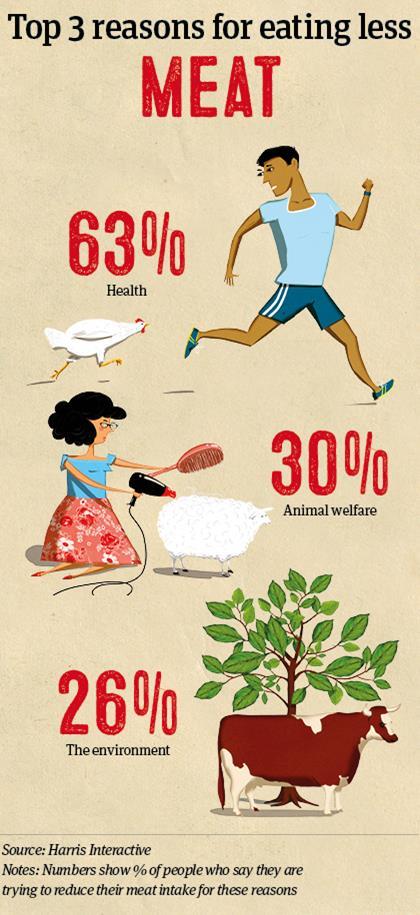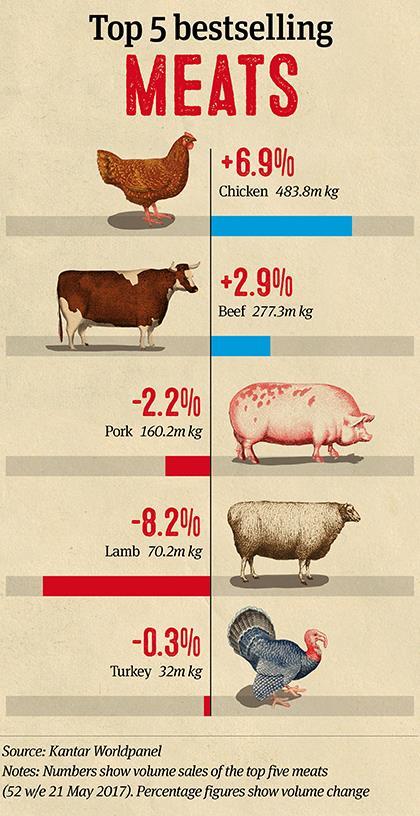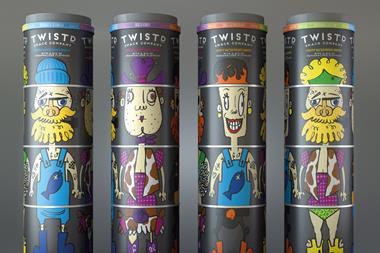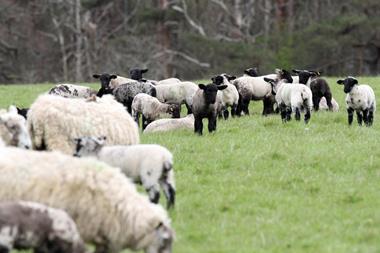Poultry is flying high as red meat feels the heat, driving solid growth in the overall meat, fish & poultry market. But with the number of Brits cutting back on meat soaring, is it time the sector had a makeover for the modern age? Why are so many Brits considering going veggie? What are brands doing to stay ahead? And could pig’s ear crackling actually be an… ahem… ‘offally’ good idea?

First, the good news: supermarket sales of meat, fish & poultry are in pretty good shape. Yes, the price war has shaved 0.9% off the value of fresh primary meat & poultry, but volumes are up 2.6%, meaning Brits have cooked up an extra 26 million kilos of meat at home in the past year [Kantar Worldpanel 52 w/e 21 May 2017]. Even sausages and bacon, which saw sales slump after they were linked to cancer, are back in volume growth. Fish, meanwhile, continues to fly.
Now for the bad news. Red meat is feeling the heat. Volume sales of lamb have slumped 8.2% and pork is down 2.2%. What’s more, 17% of Brits say they’re trying to cut down the amount of meat they eat, with 7% contemplating going veggie [Harris Interactive]. Why? And if more of us are trying to dodge meat, why are sales still up? Is the meat, fish & poultry sector heading for an existential crisis? Does it need a makeover for the modern age?
Video: Why are Brits dodging meat?
So, it’s in vogue to be veggie, particularly if you’re in the influential 25 to 34-year-old age bracket. This age group is most likely to be considering going veggie, with 13% saying they’re thinking of making the switch. That’s almost double the proportion of the wider population contemplating a meat-free diet.
A much larger group of people is looking to reduce the amount of meat they eat, rather than cut it out altogether. Seventeen per cent of 1,062 consumers polled for us by Harris Interactive say they are actively trying to cut down on the amount of meat they’re eating. Again, younger consumers are far more likely to fall into this group (see below).
Meet the meat reducers

These people - ie those who are reducing the meat in their diets rather than cutting it altogether - have a name: ‘flexitarians’. And they have the potential to cause considerable headaches for the meat sector, says Kantar Worldpanel business unit director Nathan Ward.
“The rise of the flexitarian is a much reported phenomenon, and continues to be a threat to the category,” says Ward. “At Kantar Worldpanel, we define flexitarians as meat eaters who are eating less often than the average. This group accounts for 41% of meat eaters and is growing at five times the rate of the population.”

Their motivations are clear (see left), with health and concerns over animal welfare and the environmental impact of meat production the top three cited reasons for dodging meat. That health concerns are more than twice as likely to put consumers off meat than concerns over animal welfare or the environment is also significant, in light of recent reports regarding the dangers of eating too much meat.
“We define flexitarians as meat eaters who are eating less often than the average. This group accounts for 41% of meat eaters and is growing at five times the rate of the population. It is a threat to the category.”
In 2015, a WHO report alleged that processed meats such as bacon and certain sausages caused cancer. In the following year, sales of bacon and sausages slumped by nearly £200m, thanks in part to the resulting consumer backlash and price deflation. A year later, the American Institute for Cancer Research made similar assertions. The NHS currently states that eating too much red meat increases the risk of bowel cancer.
The meat trade says consumers are being misled. “Consumers are constantly being bombarded with ‘bad for your health’ stories, so whenever we can we will provide clarity, balance and fact-based responses to these claims,” says a spokeswoman for AHDB.
“For example, 2016 British Sausage Week played a big part in providing consumers with the facts behind the misleading ‘Bacon and Sausages Cause Cancer’ headlines. Using the International Agency for Research on Cancer’s definition of processed meat, sausages are, with just a few exceptions – made with fresh pork and are therefore not a processed meat, unlike sausages such as chorizo and salami.”
The message might be getting through. Volume sales of bacon and sausages have risen by 2.3% and 1.7% respectively in the past year, although Kantar points to other factors.
“The WHO report did have an impact, but not as much as often suggested, with those concerned about health already reducing purchasing,” says Ward. “The impact of bacon and sausages moving away from three-for-£10 promotions into price cuts also had a large impact. The annualisation of these elements, plus good weather driving barbecue occasions for sausages, will have had a positive impact on the categories, although they are still smaller than they were a few years ago.”
Another motivation for consumers cutting back on meat is price. Twenty two per cent of flexitarians say the expense of meat has been a motivation for eating less of it. AHDB says it is promoting alternative butchery methods and cheaper cuts of meat to lower the price barrier. “We will be testing the market to assess consumer appetite for less popular cuts of meat,” says the spokeswoman.
An offally good idea?
This got us thinking. With price a barrier for more than one in five consumers and 52% telling us they’re concerned about the price or meat rising as a result of the weakened pound and economic uncertainty arising from Brexit, could Brits be convinced to eat the wobbly bits of the carcase that we currently send abroad?
Enter, Odd Bites, a new brand of meat snacks with a difference…
This isn’t reality (yet), but the brainchild of branding agency Interbrand. We asked it to come up with a new concept that addressed some of the challenges facing the meat industry. With its risqué slogans, funky packaging, world flavours and unusual ingredients, Odd Bites is aimed at millennials and certainly not for the squeamish.
“The crisp days are waning as we see more alternative snacks, such as protein balls, nuts and rice cakes, taken into a new snackable domain. Offal, and bites like this, could work well here,” says Interbrand executive creative director Sue Daun. “Odd Bites have taste, attitude, are packed with protein and are, ultimately, fun.”
Beef tongue biltong, pig’s ear crackling and fried chicken feet would still be a hard sell, making pack design crucial. Interbrand has pulled out the stops, using bold colours on a black background, vintage illustrations and an innovative way of giving a glimpse of what’s inside (see the animals’ eye wear above).
“You have to make it accessible so it wouldn’t have a premium price point,” adds Daun. “The biltong and pig ear are very appealing, so hopefully consumers would eventually gravitate towards the feet.”
Maybe the tongue and ear would find a market in trendy Shoreditch or Brighton, but we’re not sure the feet would have legs…
The meat of the matter: How consumption is changing and why
Perhaps Odd Bites (above) isn’t quite as far out as it seems. Meat snacks are in growth, after all, and a key challenge for the industry is the growth of on-the-go eating and the decline of the traditional ’meat & two veg’ meal. This is hitting some meats hard and benefiting others.

In the past year, volume sales of fresh poultry have overtaken red meat, with chicken growing 1.5% in value and 6.9% in volume. “We’ve reached a tipping point in terms of what people eat for meals,” says Ward. “This is favouring chicken.”
Nearly half (49%) of all home-cooked meals are now dishes such as curries, pasta and stir-fry, after a 6% rise in occasions. Traditional ‘meat & two veg’ meals have fallen 2% and now account for 51% of the total. Chicken’s versatility and availability in smaller formats make it more suitable for meal occasions with fewer people present, said Ward, while joints and larger cuts of red meat are less suitable.
“ Forty-three per cent of meals are consumed alone, compared to 33% in 1980. Two-thirds of the population live in one or two-member households – 76% of meals are one or two-people occasions.”
Beef has also grown, by 0.7% on volumes up 2.9%, thanks to its use in Italian dishes such as lasagne and bolognese, which are growing in popularity, says Ward. Lamb and pork volumes have fallen by 8.2% and 2.2% respectively, because they have “ much lower ‘dish’ consumption than the other proteins” according to Ward.
Health redefined
Changing ideas of what constitutes healthy eating is also changing shopping habits. As we’ve seen, concern over the cancer risk of eating too much red and processed meat is to an extent driving people away from such products. But there are also several pull factors drawing consumers to white meat and fish. Our research shows that 21% of Brits are actively trying to eat more fish.
“ Fish has many inherent health credentials – it’s low in fat, a natural source of omega-3, and nutrient-dense – and so it will have a significant role to play in helping consumers lead a healthier lifestyle,” says Young’s Seafood head of frozen Jason Manley. “ As part of the ‘intelligent health’ trend, in which consumers are keeping up to date on the latest studies on which foods are healthy, we are seeing a move towards protein and a focus on health and wellbeing.”
Fish products such as Young’s Chip Shop Cod and even the humble fish finger are cashing in on growing demand for fish, and on the growth of smaller households and single meal occasions.
“ Portionability and food flexibility are key benefits to offer,” says Birds Eye marketing director Steve Challouma. “ Our frozen fish range is as popular as ever, with our fish fingers achieving value sales of just over £90m and growing by 10% year on year. Our Battered Fish Fillets have seen a resurgence, growing over 30% in the last three weeks versus last year.”
Chicken is also benefiting from this change in attitude to healthy eating, adds Ward. “ Consumers are more interested in lighter and less filling meals, natural and less processed products and something that complements their 5 a day,” he says. The message on social media is about the benefits of lean meals and specifically protein, as the likes of Joe Wicks talk about the benefits of a protein-fuelled diet. This message is gaining traction and is driving some people to see meat, fish and poultry in a new light.”
How suppliers are giving their products a makeover
1. Birds Eye Chicken Mini Fillets: Birds Eye says it’s products such as this that are helping to drive chicken’s surge in popularity. Aimed at one and two person meal occasions, these are premium whole fillets in breadcrumbs. “S hoppers are given the freedom to eat as much or as little in one sitting, without the need throw away what isn’t consumed,” says Challouma.
2. Pork medallions: The AHDB is looking to address falling pork sales by pushing this versatile cut at the midweek market and ending the meat’s reliance on the declining ’meat & two veg’ occasion.
3. Gastro Chunky Smoked Haddock Fish Cake: Products such as this have been a key driver of fish’s growing popularity, taking the fuss out of cookling fish and appealing to the growing number of Brits who are eating alone. “ This is a perfect example of a product that challenges the misguided perception of poor quality in frozen food,” says Manley.
4. Cannon of lamb: With lamb volumes down a whopping 8.2% in the past year, if one meat needs a makeover, this is it. AHDB is looking to address lamb’s fall from fashion with this cut; one half of a loin of lamb, boned and trimmed, making it versatile and easy to prepare.
5. Birds Eye Battered Cod Fillets: Sales of this product are booming, says Birds Eye, as shoppers continue to switch from meat to fish. Social media campaign Fish Friday is also helping, says Challouma: “ Our investment has had a massive impact on the category and our brand already – in the last three months we have seen sales grow by 9%, which has driven category growth of 6%.”
Final food for thought: What would make Brits eat more meat?
There’s good news for the industry in our research, too: 34% of Brits agree with the statement ’Meat is delicious. I will never reduce the amount I eat’. We also have some pointers on how suppliers and retailers could convince shoppers to consume more of the stuff, with higher quality, British provenance and animal welfare the top three (see below).

Thanks to…

Harris Interactive , a full-service digital consultative custom market research agency, polled more than 1,000 consumers for The Grocer for this article.
![]()
With its 30,000-strong consumer panel, Kantar Worldpanel , is a leading consumer and shopper insights provider. Kantar provided sales and usage data and analysis for this article.

Global brand consultancy Interbrand came up with the Odd Bites concept for this article.



















No comments yet